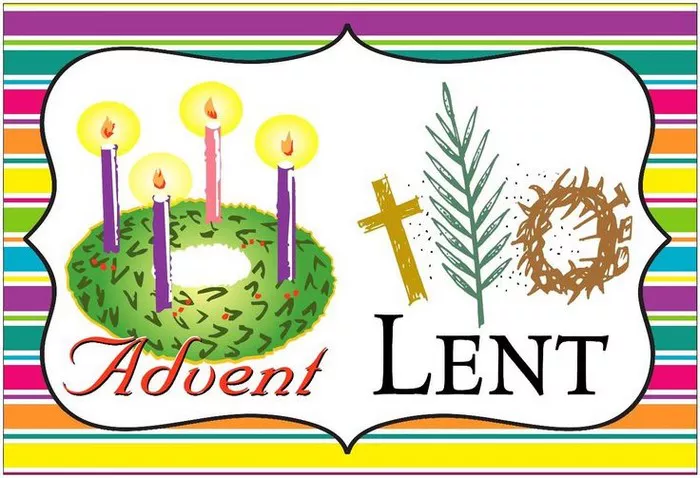Advent and Lent are two significant seasons in the Christian liturgical calendar, observed by millions of believers worldwide. While both periods hold deep spiritual significance, they differ in their themes, practices, and historical origins. Understanding the distinctions between Advent and Lent can enrich one’s spiritual journey and foster a deeper appreciation for the diverse traditions within Christianity.
Origins and Historical Significance
Advent and Lent both have roots in ancient Christian traditions and have evolved over centuries into distinct seasons within the liturgical calendar.
Advent:
Derived from the Latin word “adventus,” meaning “coming” or “arrival,” it marks the beginning of the Christian liturgical year. It originated in the early centuries of Christianity as a period of preparation for the celebration of the birth of Jesus Christ, or Christmas. The length of Advent has varied throughout history, with the modern observance typically spanning the four Sundays leading up to Christmas Day. It is a time of anticipation, reflection, and spiritual preparation for the coming of Christ, not only in commemoration of his historical birth but also in anticipation of his promised return.
Lent:
On the other hand, it has its origins in the early church’s practices of fasting and penance. The word “Lent” comes from the Old English word “lencten,” which means “springtime” and shares linguistic roots with the German “Lenz” and Dutch “lente.” Lent spans a period of approximately 40 days, mirroring the 40 days Jesus spent fasting in the wilderness before beginning his public ministry. This season begins with Ash Wednesday and concludes with Easter Sunday, commemorating Jesus’ crucifixion and resurrection. Lent is traditionally a time of repentance, self-examination, and spiritual discipline, during which believers prepare their hearts to commemorate the passion and resurrection of Christ.
Themes and Focus
While both Advent and Lent are seasons of preparation and anticipation, they emphasize different aspects of the Christian faith and the life of Christ.
Advent:
Advent focuses primarily on the themes of hope, anticipation, and preparation. During this season, Christians reflect on the prophecies of the Messiah found in the Old Testament and anticipate the fulfillment of these promises in the birth of Jesus Christ. Advent encourages believers to prepare their hearts and minds to celebrate the incarnation of God in human form, emphasizing the themes of light shining in darkness and the coming of the Savior into the world.
Lent:
Lent, on the other hand, centers on themes of repentance, self-denial, and spiritual renewal. It is a solemn period of introspection and penitence, during which believers are called to examine their lives, confess their sins, and seek reconciliation with God and others. Lent invites Christians to journey with Jesus through his suffering, death, and resurrection, confronting the reality of sin and mortality while also embracing the hope of new life and redemption found in Christ.
Liturgical Practices and Observances
Both Advent and Lent are marked by distinctive liturgical practices and observances that help believers engage more deeply with the spiritual themes of each season.
Advent:
During Advent, churches may use special liturgical colors such as purple or blue to symbolize anticipation and royalty, while also incorporating symbols like the Advent wreath, candles, and Jesse tree into worship services and devotional practices. Advent is a time of joyful expectation, characterized by hymns and readings that celebrate the coming of Christ and prepare believers for the celebration of Christmas.
Lent:
In contrast, Lent is a season of solemnity and austerity, often marked by the use of purple vestments and paraments in churches to symbolize penitence and mourning. Traditional Lenten practices include fasting, prayer, almsgiving, and self-denial, as believers seek to emulate Jesus’ 40-day fast in the wilderness. Many Christians also participate in special services such as Ash Wednesday liturgies, Stations of the Cross, and Holy Week observances leading up to Easter Sunday.
Significance in Christian Worship
Both Advent and Lent hold significant importance in the life of the Christian community and play a vital role in the church’s worship and spiritual formation.
Advent:
Advent serves as a time of joyful expectation and preparation for the celebration of Christ’s birth, reminding believers of the hope and promise fulfilled in Jesus’ coming. It invites Christians to reflect on the significance of the Incarnation and to renew their commitment to following Christ as Lord and Savior.
Lent:
Lent, meanwhile, is a season of profound spiritual reflection and renewal, calling believers to repentance and discipleship as they journey with Jesus toward the cross and the empty tomb. It provides an opportunity for Christians to deepen their relationship with God through prayer, fasting, and acts of mercy, as they seek to align their lives more closely with the example and teachings of Jesus.
Conclusion
In conclusion, Advent and Lent are two distinct but complementary seasons in the Christian liturgical calendar, each offering unique opportunities for spiritual growth, reflection, and worship. While Advent focuses on the anticipation of Christ’s coming and the celebration of his birth, Lent invites believers to journey with Jesus through his suffering, death, and resurrection, confronting the reality of sin and embracing the hope of redemption.
By observing these seasons with intentionality and reverence, Christians can deepen their understanding of the Christian faith and cultivate a deeper relationship with God. Whether through the joyful anticipation of Advent or the solemn reflection of Lent, believers are invited to journey with Jesus and experience the transformative power of his love and grace in their lives.

